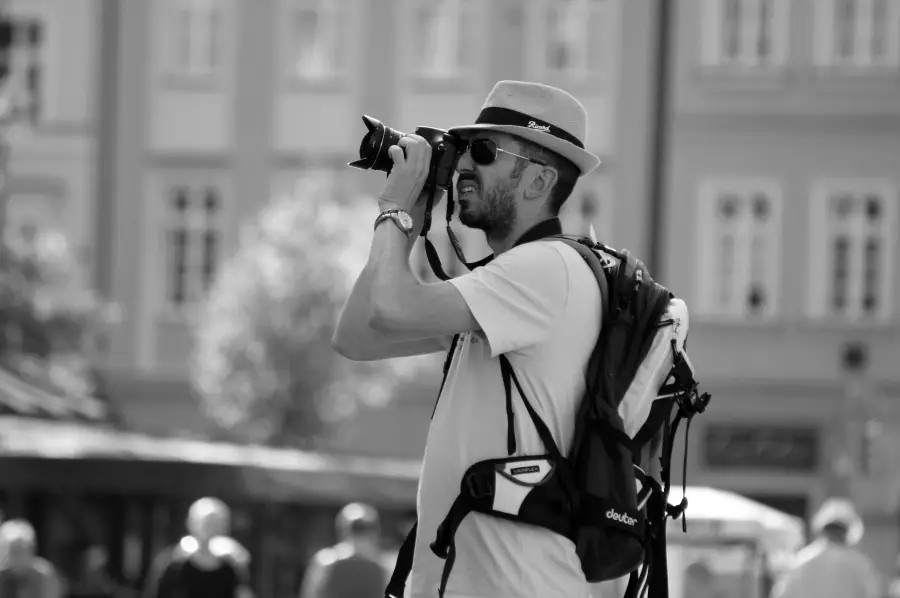AI Picture Trends: A Glimpse into the Future of Visual Content
Unlocking the Potential of AI-Powered Visual Content
In today's fast-paced digital landscape, visual content reigns supreme. From social media posts to marketing campaigns and even educational materials, images and videos are at the forefront of communication. As we march into the future, artificial intelligence (AI) is poised to revolutionize how we create and interact with visual content. In this comprehensive guide, we will delve into the exciting realm of AI picture trends, offering you a glimpse into the future of visual content creation and consumption.
The Evolution of Visual Content
Before we plunge into the exciting world of AI picture trends, let's take a moment to reflect on the journey of visual content.
In the early days of the internet, visuals were limited to basic graphics and pixelated images. However, as technology advanced, so did the quality and complexity of visual content. High-definition images, intricate infographics, and captivating videos became the norm. Yet, this was just the beginning.
With the advent of artificial intelligence, visual content creation has reached new heights. AI-driven tools and algorithms are transforming the way we conceptualize, produce, and engage with images and videos. Let's explore the key AI picture trends that are shaping the future of visual content.
AI-Powered Image Generation
Creating Art with Algorithms
AI-driven image generation is a game-changer in the world of art and design. Artists and designers now have access to tools that can instantly generate stunning visuals based on specific themes, styles, and moods. These AI-powered generators analyze vast datasets of artwork, learning from the masters and producing unique creations.
Imagine a world where you can commission an AI to produce a custom piece of art for your home, perfectly tailored to your taste. AI picture trends are making this a reality, ushering in a new era of personalized visual expression.
Video Enhancement and Editing
From Raw Footage to Cinematic Masterpieces
Video content is an integral part of our online experience, whether it's streaming a movie or watching a tutorial. AI has stepped into the realm of video production, offering tools that can enhance video quality, remove imperfections, and even generate realistic deepfake videos.
Content creators and filmmakers are now equipped with AI-driven video editing software that can transform raw footage into cinematic masterpieces. This trend is democratizing video production, allowing creators of all levels to achieve professional results.
You may also like to read:
AI in Finance: How Machine Learning is Reshaping the Banking Industry
AI-Powered Content Curation
Tailored Visual Experiences
As the volume of visual content online continues to skyrocket, finding relevant and engaging visuals can be overwhelming. AI-driven content curation is here to help. Algorithms analyze user preferences and behaviors to deliver personalized visual experiences.
For example, social media platforms use AI to curate your feed, showing you posts and images that are most likely to capture your interest. This level of personalization enhances user engagement and keeps us coming back for more.
The Future of E-Commerce
Visualizing Products like Never Before
E-commerce is all about showcasing products effectively, and AI is transforming this landscape. Virtual try-ons, 3D product visualizations, and augmented reality (AR) shopping experiences are becoming the norm. AI algorithms can analyze your body shape and suggest clothing that fits perfectly, all without trying it on physically.
AI-Powered Photography
Capturing the Perfect Shot
Photography enthusiasts and professionals alike are benefiting from AI's ability to assist in capturing the perfect shot. AI-powered cameras can adjust settings in real-time, ensuring optimal lighting, focus, and composition. This results in stunning photographs even for those who aren't photography experts.
FAQs
Q: How does AI analyze and generate art?
A: AI analyzes vast datasets of artwork, learns from artistic styles, and uses algorithms to create unique pieces based on specific themes or moods.
Q: Can AI-generated art be considered authentic?
A: The authenticity of AI-generated art is a subject of debate. While the art is created by algorithms, it can still be considered authentic in the sense that it reflects the AI's learned style and choices.
Q: Are there ethical concerns with AI-generated deepfake videos?
A: Yes, there are ethical concerns with deepfake videos. They can be used to create misleading or harmful content, which raises questions about consent, privacy, and misinformation.
Q: How can AI-powered content curation benefit users?
A: AI-powered content curation benefits users by delivering personalized content that matches their interests and preferences, making their online experience more enjoyable and efficient.
Q: Are there risks of bias in AI-powered photography?
A: Yes, AI-powered photography can exhibit bias if the algorithms are trained on biased datasets. This can result in unequal representation and potentially reinforce stereotypes.
Q: What are the implications of AI in e-commerce?
A: AI in e-commerce is transforming the way products are presented and experienced online, offering virtual try-ons, personalized recommendations, and immersive shopping experiences.
Conclusion
AI picture trends are reshaping the landscape of visual content creation and consumption. From AI-generated art to enhanced videos and personalized content curation, the future of visual content is brighter and more exciting than ever. As we embrace these trends, it's important to navigate the ethical and creative challenges they bring. The fusion of human creativity with AI-powered tools promises a world where visual content knows no bounds.
So, stay tuned for the ever-evolving AI picture trends, and get ready to witness the future of visual content unfold before your eyes.








